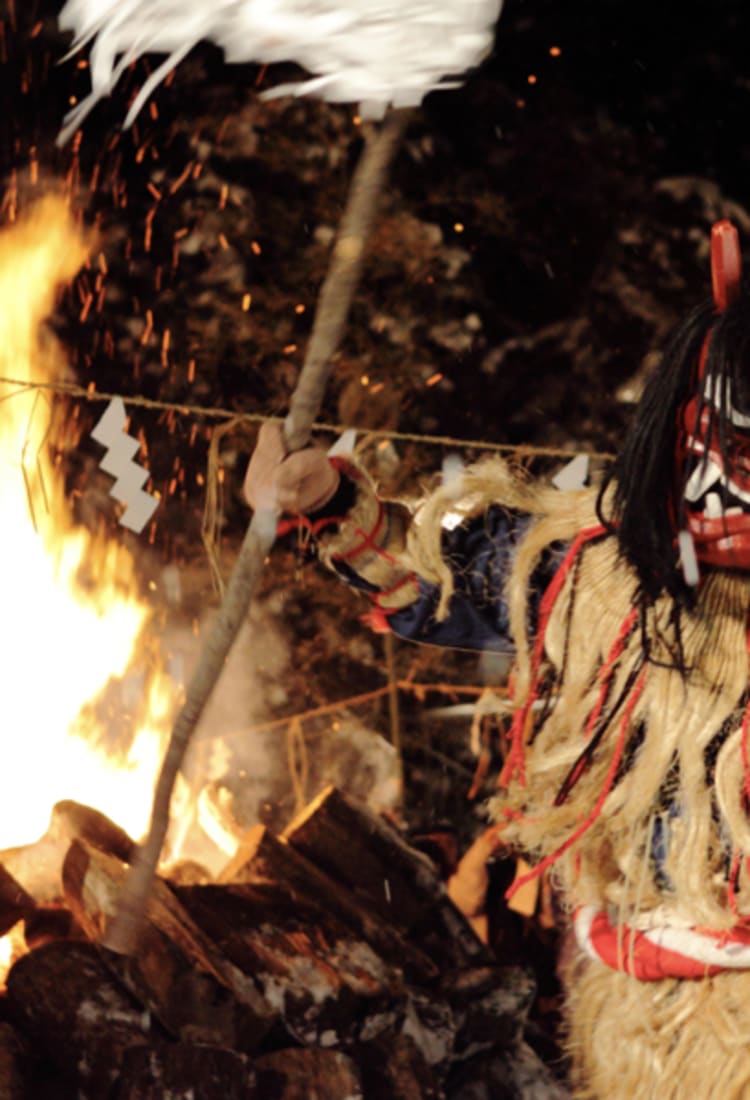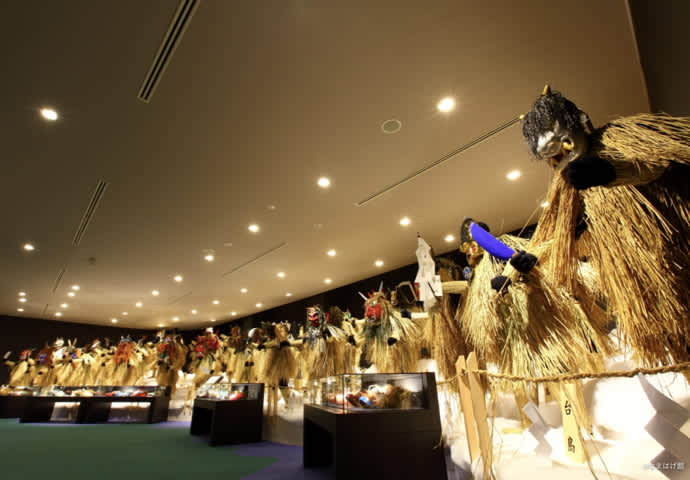
See the Oga no Namahage masked deities, a UNESCO Intangible Cultural Heritage
See the Oga no Namahage masked deities, a UNESCO Intangible Cultural Heritage
The demons come bringing divine gifts while wearing frightening masks and costumes

The Oga no Namahage event that takes place in the Oga and Shinzan regions also involves discussions and the sharing of food and drink
Namahage walk around to people’s homes screaming things like “where are the crying children!?!” This local custom takes place every year on the night of New Year’s Eve, and plenty of children are frightened by the screaming men in demon-like costumes and masks. But the namahage are actually benevolent spirits who are there to ward off tragedy and bring the families good luck.
The Oga no Namahage event takes place throughout the Oga Peninsula, but the masks, costumes, and other customs vary from village to village. In the Shinzan region, the namahage start by announcing their visit to local homes, and if they are invited in, wander through the house yelling and shouting out words of warning. The head of the household discusses his family concerns with the namahage as he attempts to calm the spirit down with offers of food and drink.
The straw that drops from the namahage’s costume (kede) is carefully collected by the family and used to pray for good health. Oga no Namahage is an important event that drives away complacency so people can make a fresh start in the New Year while praying for a safe year to come.
Come and experience the namahage for yourself!

The Namahage Sedo Festival takes place every February at Shinzan Shrine
Even if you can’t make it out to Oga on New Year’s Eve, there are still places where you can experience the namahage firsthand.
Every February, the Namahage Sedo Festival takes place at Shinzan Shrine. A fire is lit on the temple grounds, and the namahage begin their spirited dance around it. There are rousing taiko drum performances as well. Namahage from all over the region gather for this powerful and dynamic festival.
At the Namahage Museum, you can see 150 namahage masks that were once actually used in the New Year’s Eve event on display. It is fascinating to see the regional variations. There are also films showing scenes from the New Year’s Eve namahage events and an area where you can try on namahage costumes for yourself.

Namahage on display at the Namahage Museum. They are wearing an incredibly diverse array of 150 masks that were once used in the various communities of Oga.
If you want to go beyond the costumes and masks and actually experience the New Year’s Eve event, head to the neighboring Oga Shinzan Folklore Museum. Here they offer instructive talks that also allow you to experience the namahage customs of the Shinzan region. Everything is faithfully recreated, from the namahage’s tours through local homes to their discussions with the family members. It truly gives you a sense of the dynamic energy on New Year’s Eve.
To get to Oga from Tokyo, start by taking the Shinkansen to Akita Station. From there, you can switch to a local line that gets you to Oga Station in about an hour. From Oga Station, you can ride the local buses to get around—but a more convenient option for travelers is to take a taxi. The Namahage Shuttle (English available) shared taxi takes you to the Namahage Museum, Shinzan Temple, and other local hotspots, and can be reserved for one or more travelers. There are also tour packages that include hot springs, the aquarium, and other sites, so select the one that’s right for your trip.




















































